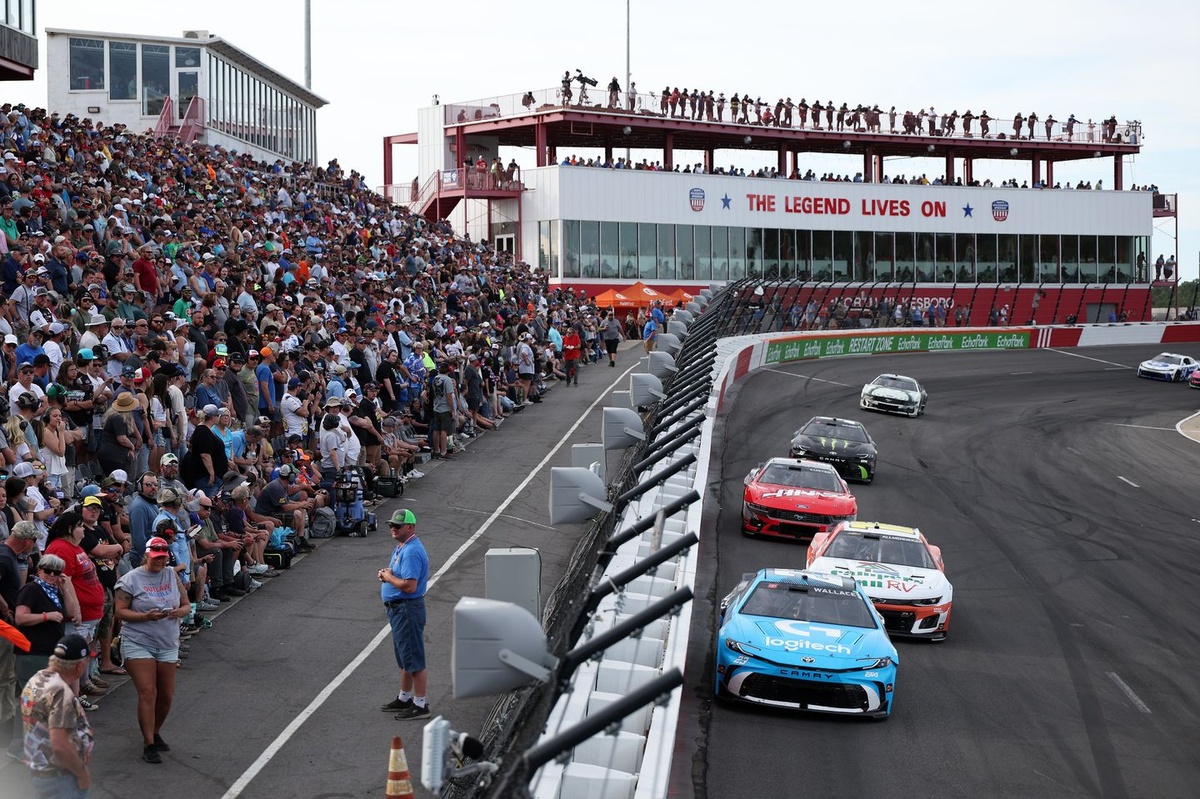The 2026 NASCAR Cup Series season is effectively kicking off with two days of tire testing scheduled for Wednesday and Thursday. Goodyear is working on refining its tire options for the quick half-mile track, addressing the recent inconsistencies seen in tire performance ranging from traditional racing patterns to rapid tire wear. The instability is mainly attributed to temperature fluctuations, with colder weather reducing tire grip, leading to tire sets lasting only 30 to 50 laps under proper management during the spring 2024 and fall 2025 races. Although these races have been praised for creating varied speeds and increased contact, the general aim is to find a tire solution less influenced by weather conditions.
NASCAR and Goodyear’s test will focus on tire management to discover a setup that encourages falls yet prevents extreme tire wear, and produce tire performance that remains consistent regardless of temperature changes. Participating drivers include Bubba Wallace (#23 23XI Racing Toyota), Alex Bowman (#48 Hendrick Motorsports Chevrolet), and Ryan Preece (#60 RFK Racing Ford). This testing also introduces a short track package with a new tapered spacer delivering 750 horsepower, up from the current 670, as part of next year’s new-generation car regulations.
Post-Bristol, further testing is expected at North Wilkesboro, where NASCAR plans to explore technical car adjustments to enhance short track racing. Since the 2022 debut of the current car, improvements on intermediate tracks came at the cost of performance on flat short tracks and road courses due to high aerodynamic sensitivity for trailing cars. NASCAR Chairman Steve O’Donnell expressed openness to trying new ideas alongside increased horsepower.
Drivers like Christopher Bell have emphasized the need for Cup cars to behave more like Xfinity cars, advocating for changes such as a different aero map to improve handling, especially in traffic. Bell pointed out that Cup cars currently have a “nose up, tail down” posture, producing downforce from the rear, which hampers close racing and overtaking compared to the “nose down, tail up” style of Xfinity cars.
In addition to tires and aerodynamics, NASCAR is testing a new electric control unit and data logger for the upcoming season. Crew chiefs acknowledge the complexity of achieving the desired improvements, with many uncertain about how to solve aerodynamic challenges, while keeping costs manageable.
Despite the challenges, there is optimism that incremental changes—such as higher horsepower combined with improved tires and potential aerodynamic tweaks—will enhance the racing product. Crew chiefs like Paul Wolfe expressed hope that these efforts will continue to push the sport in the right direction, with NASCAR yet to finalize details on the upcoming North Wilkesboro tests.
Fan Take: This testing marks an important step toward making NASCAR racing more exciting and competitive, especially on short tracks where close battles often get compromised. For fans, these advancements could mean more thrilling races, better tire durability, and cars that handle more dynamically, preserving the exhilarating on-track action the sport thrives on.



